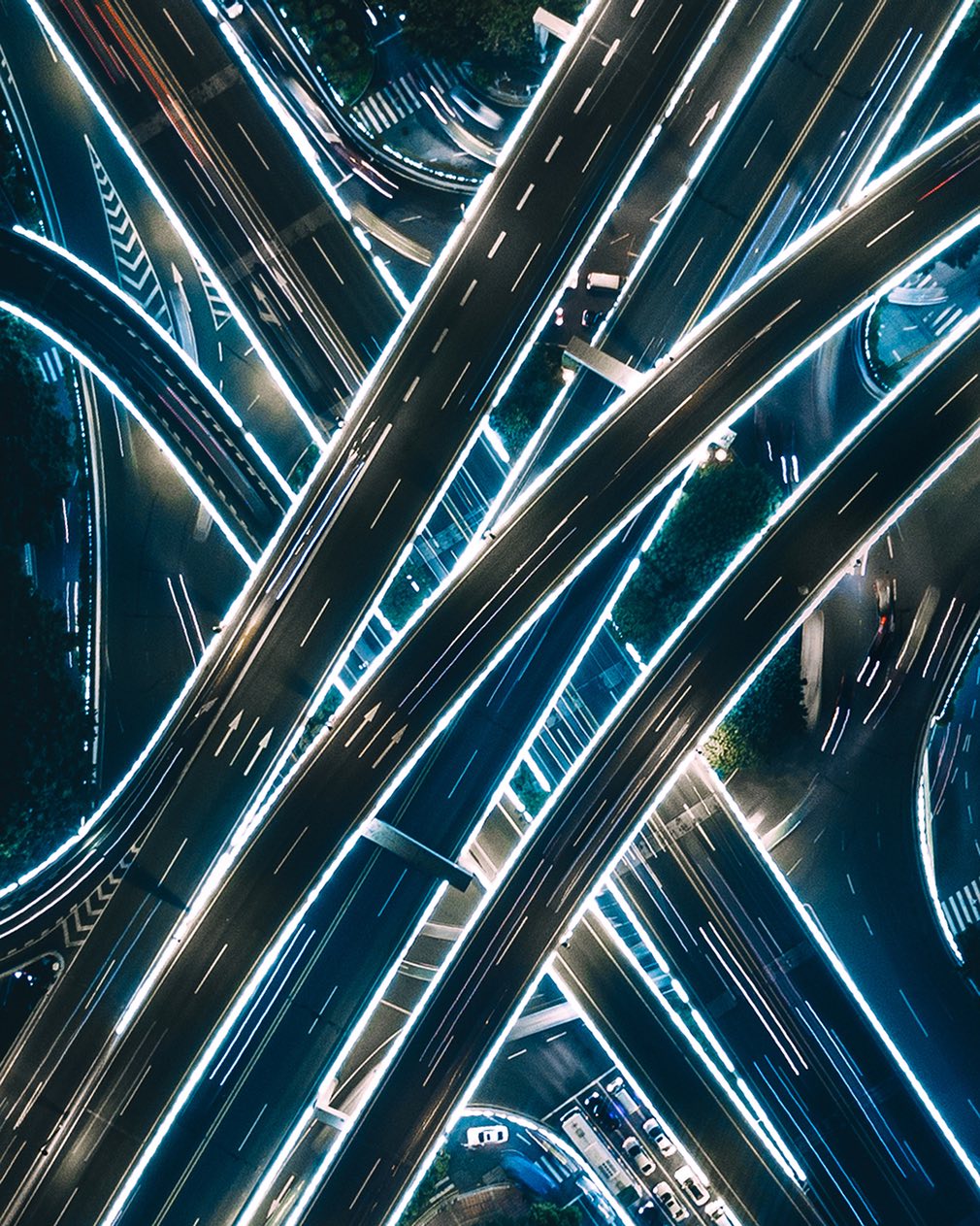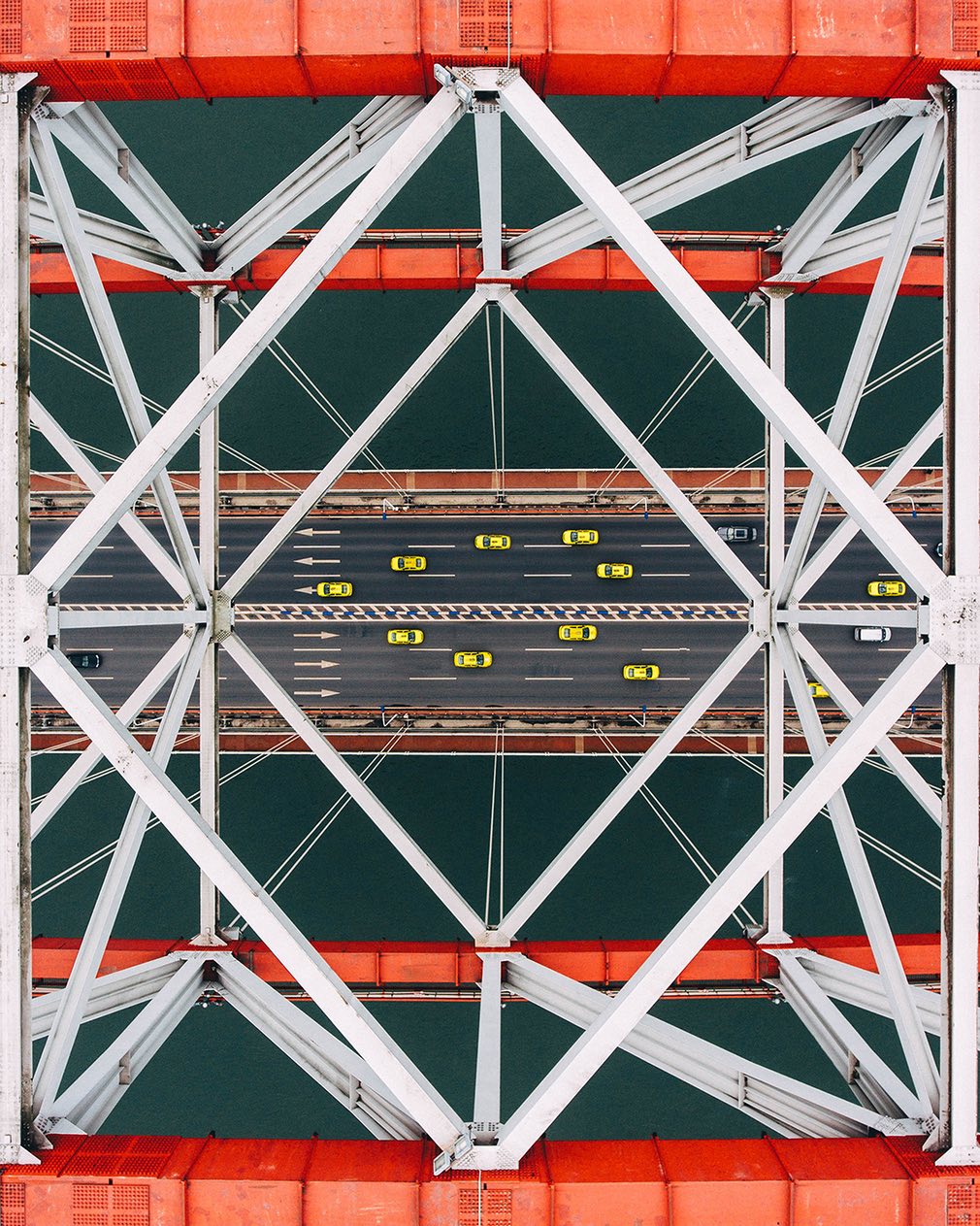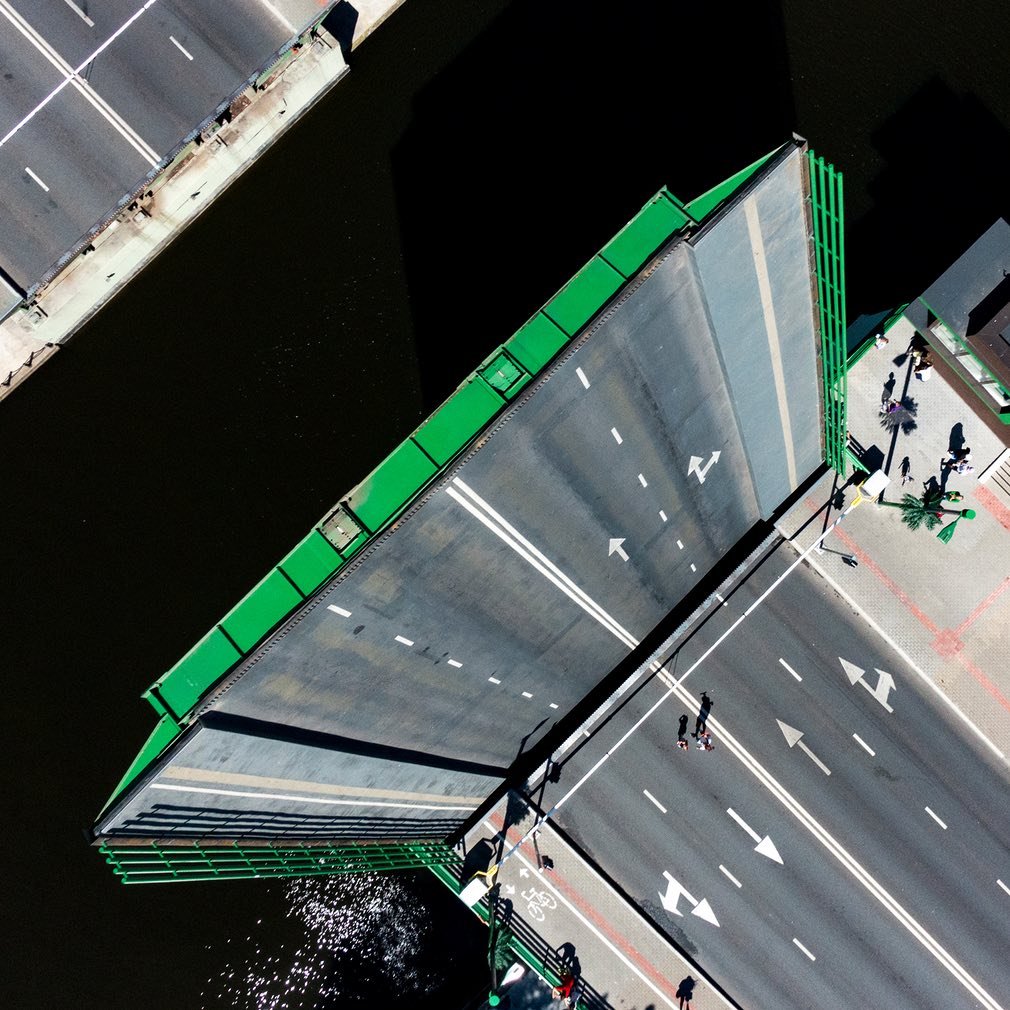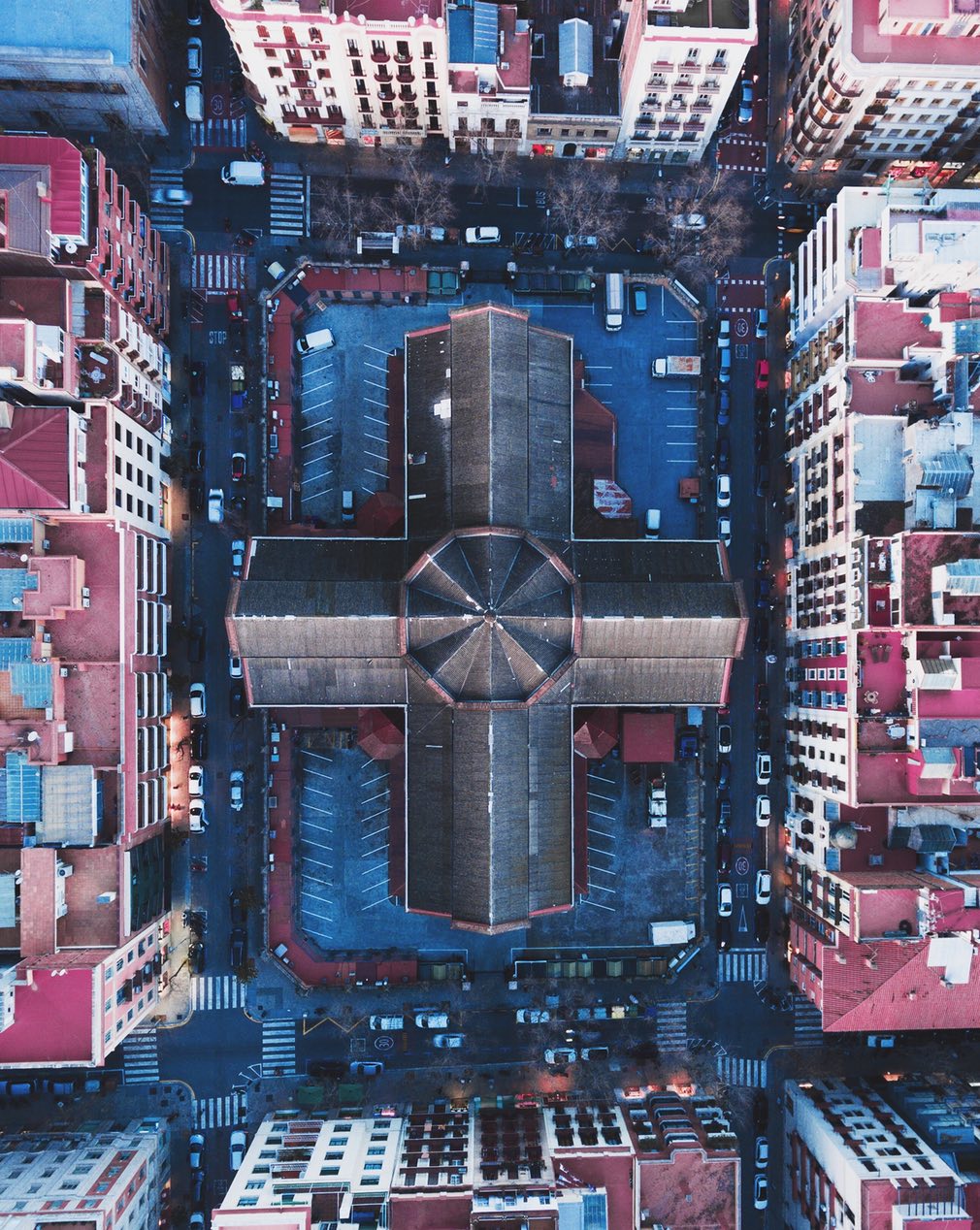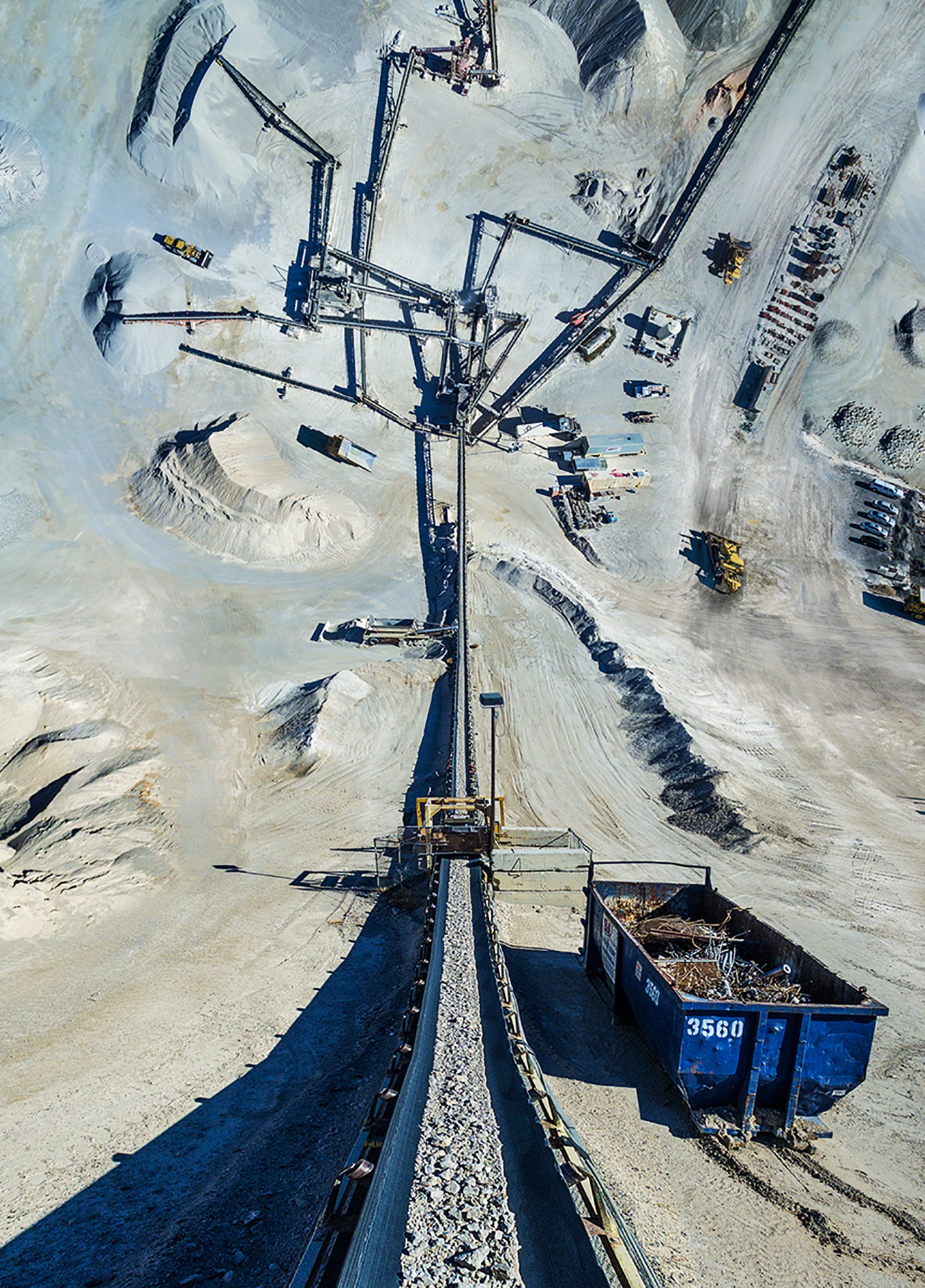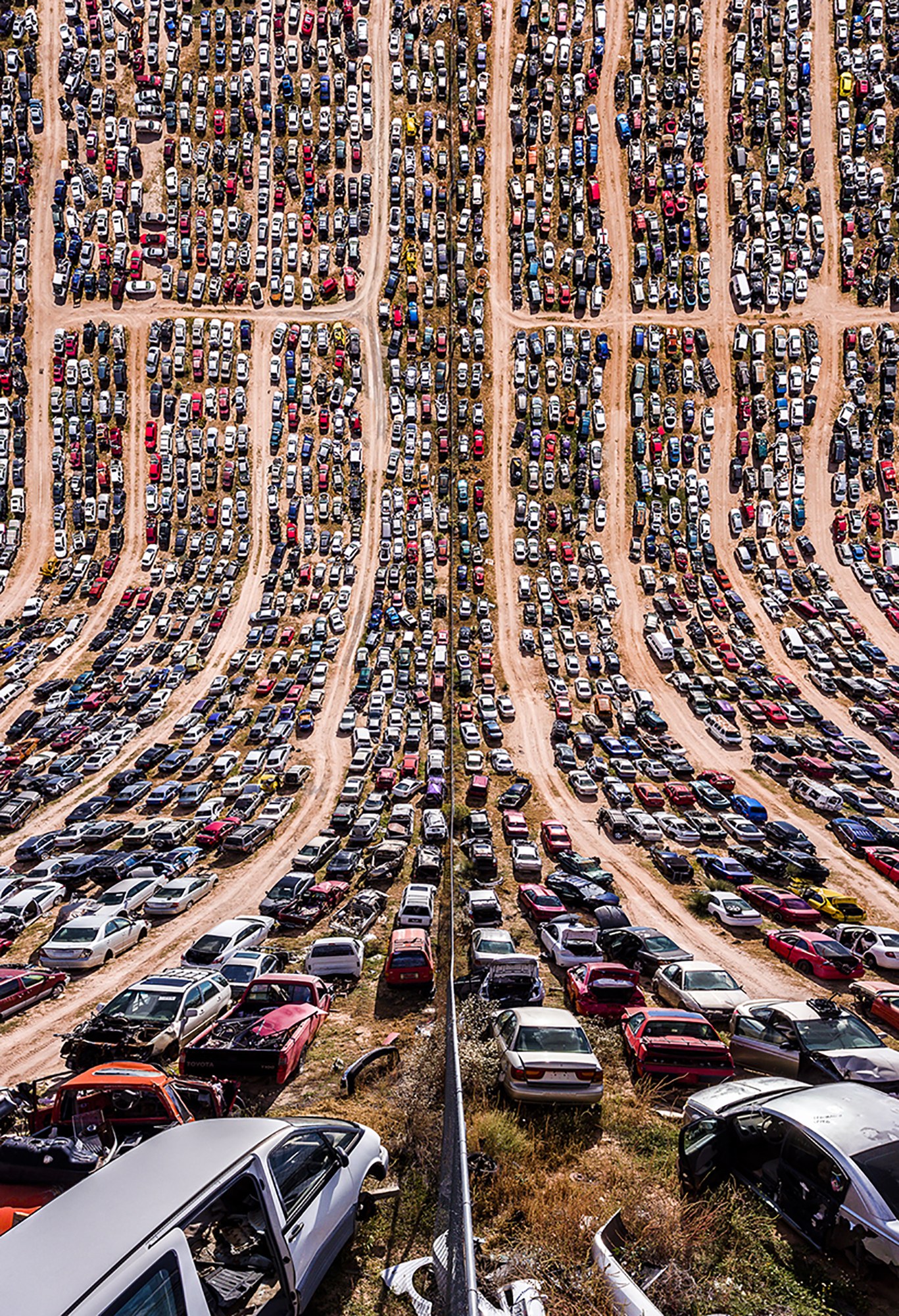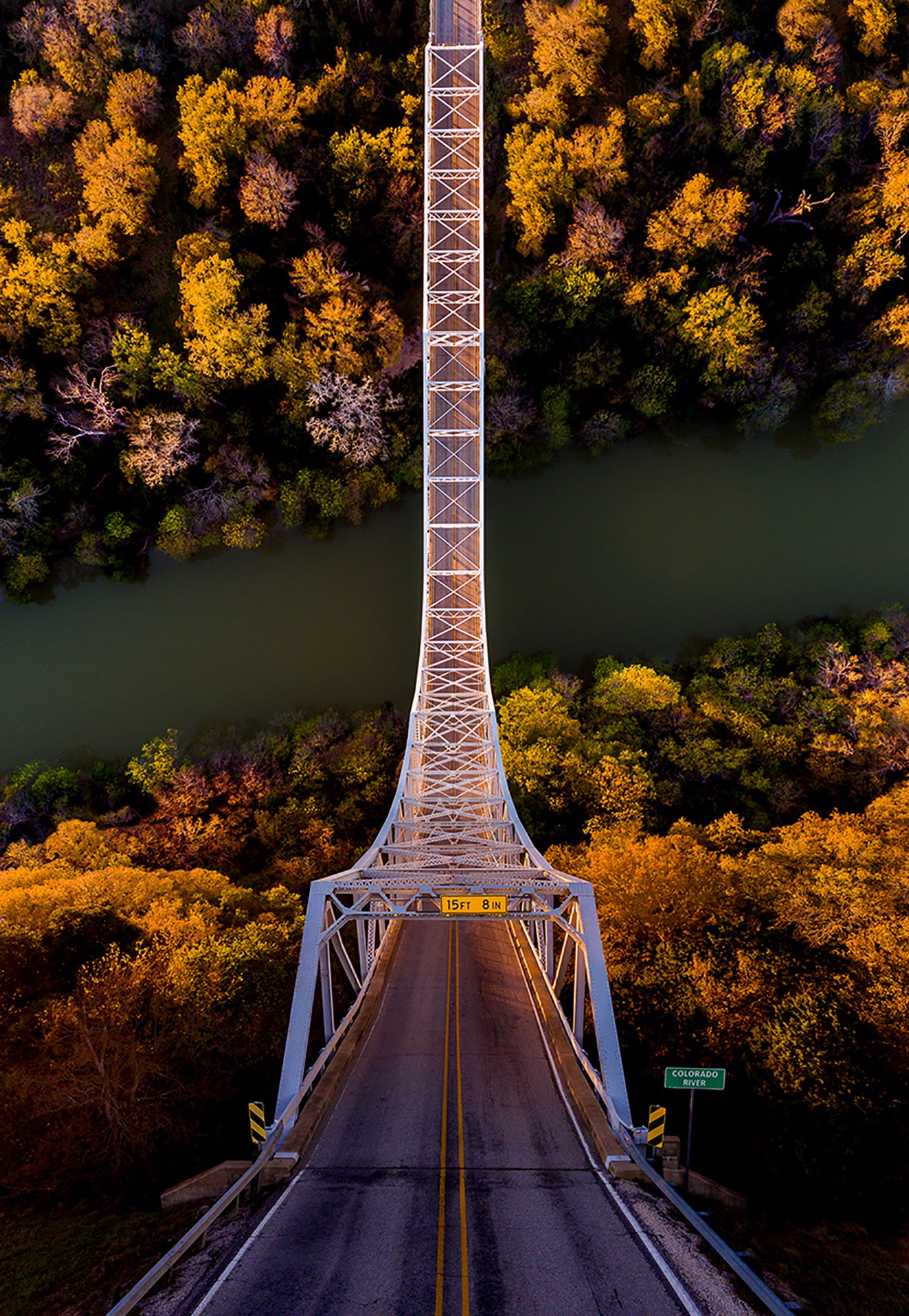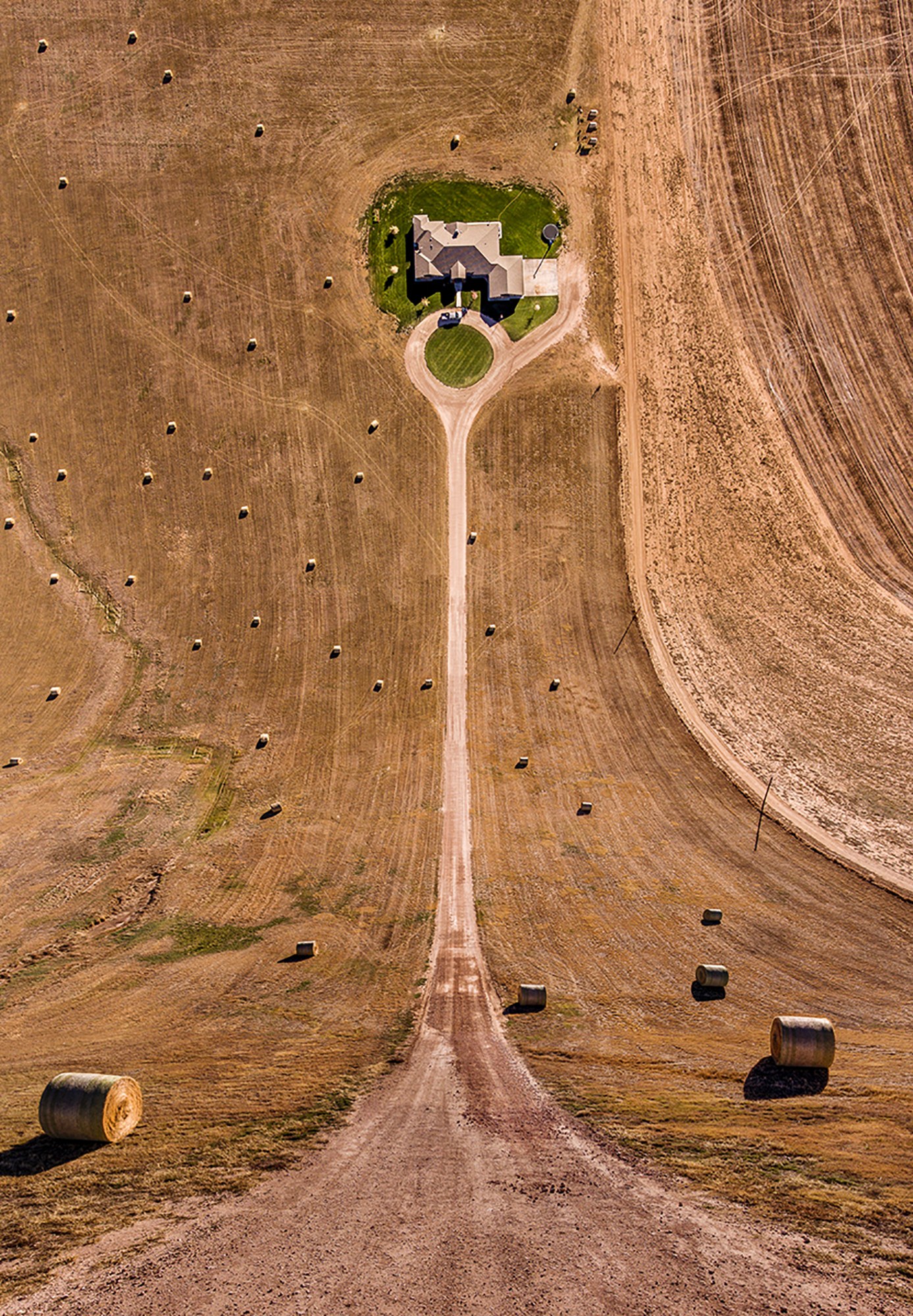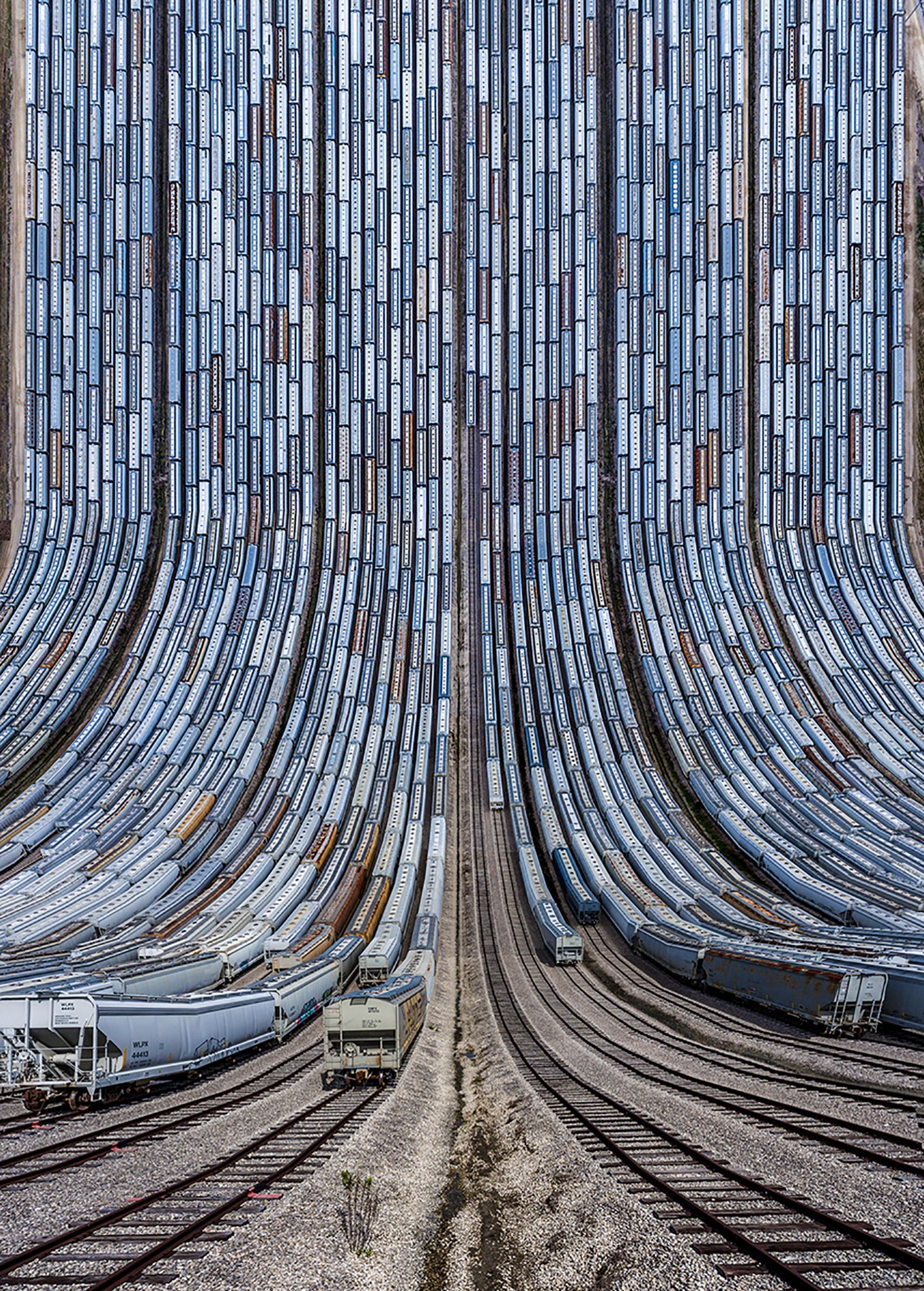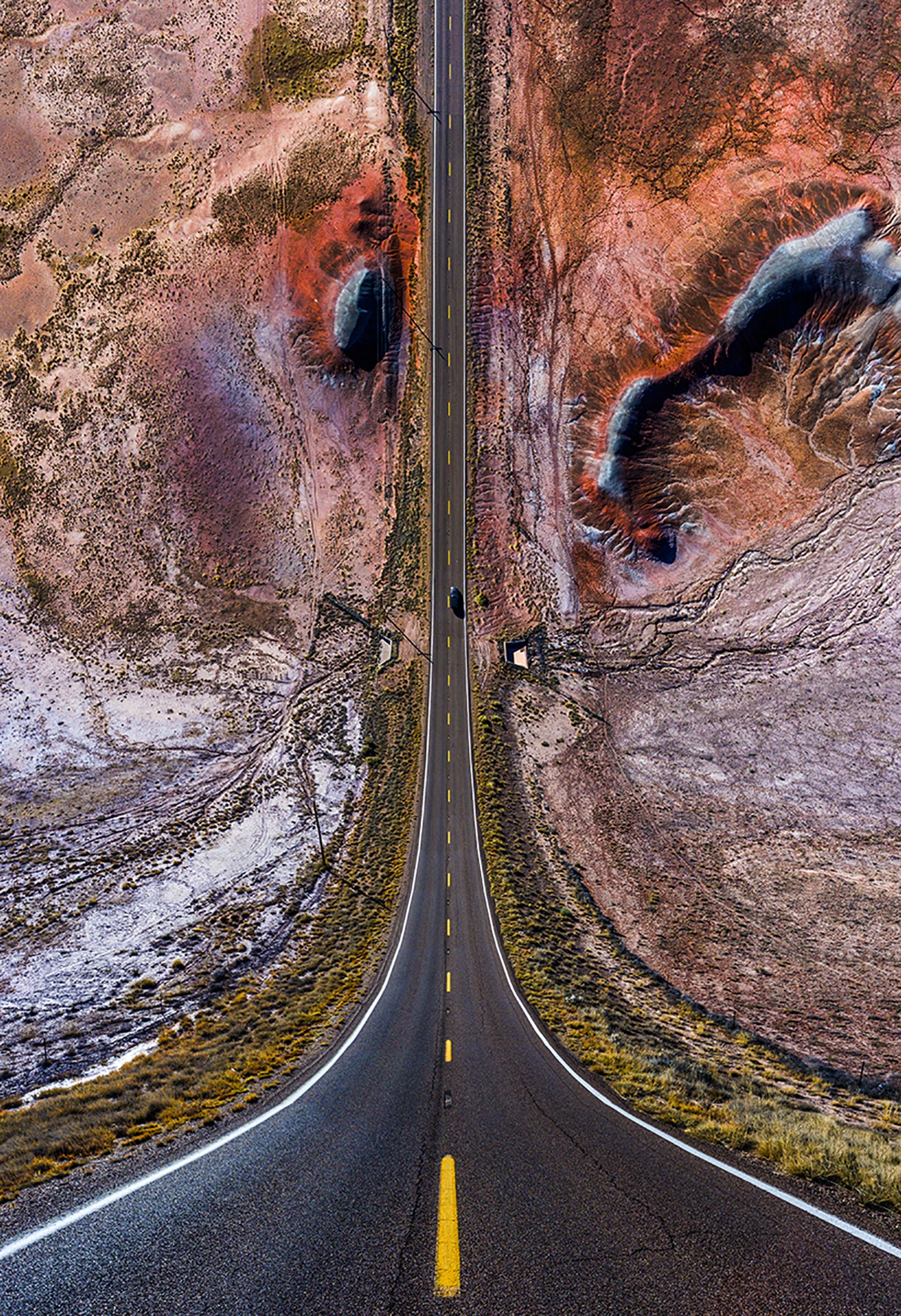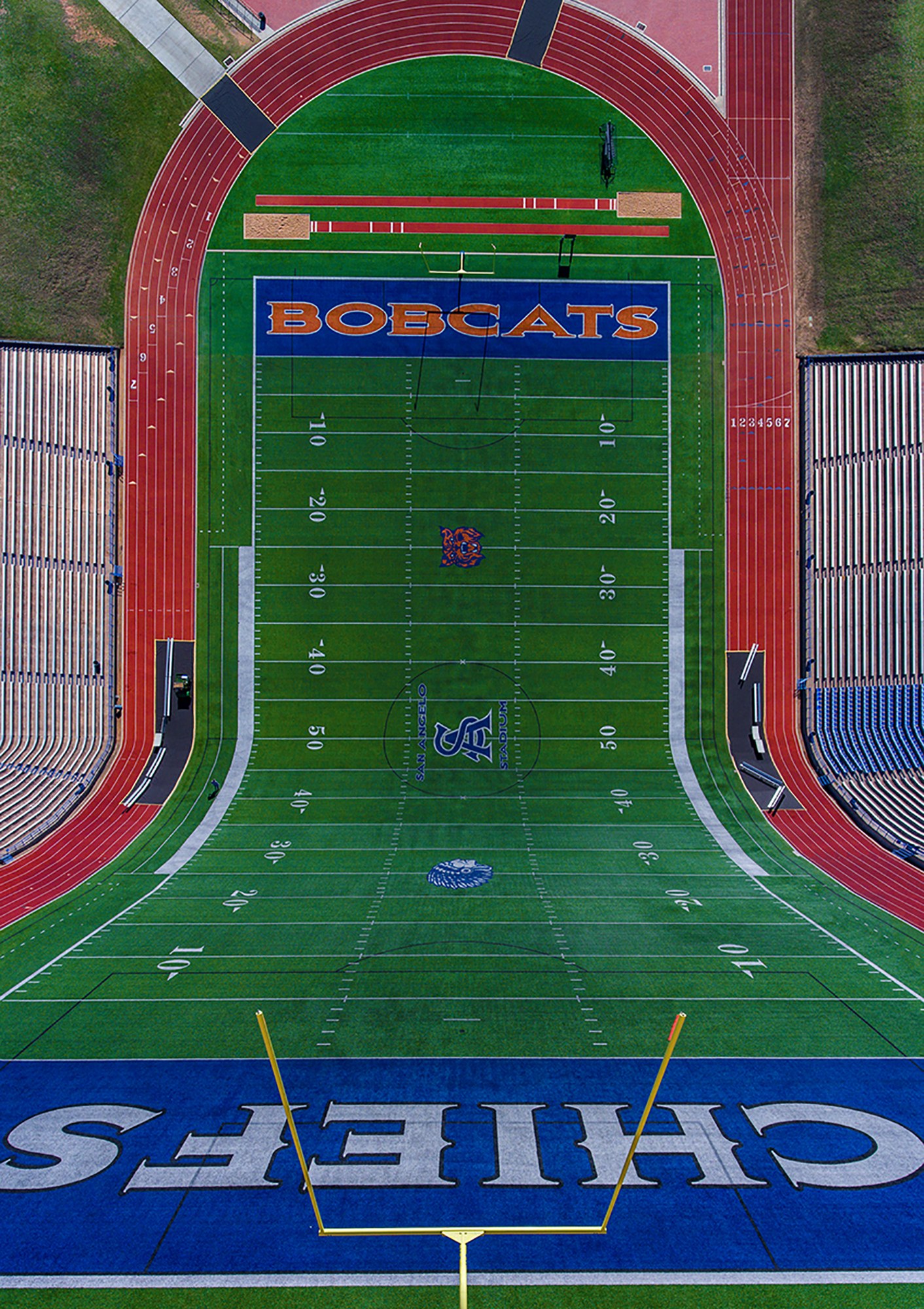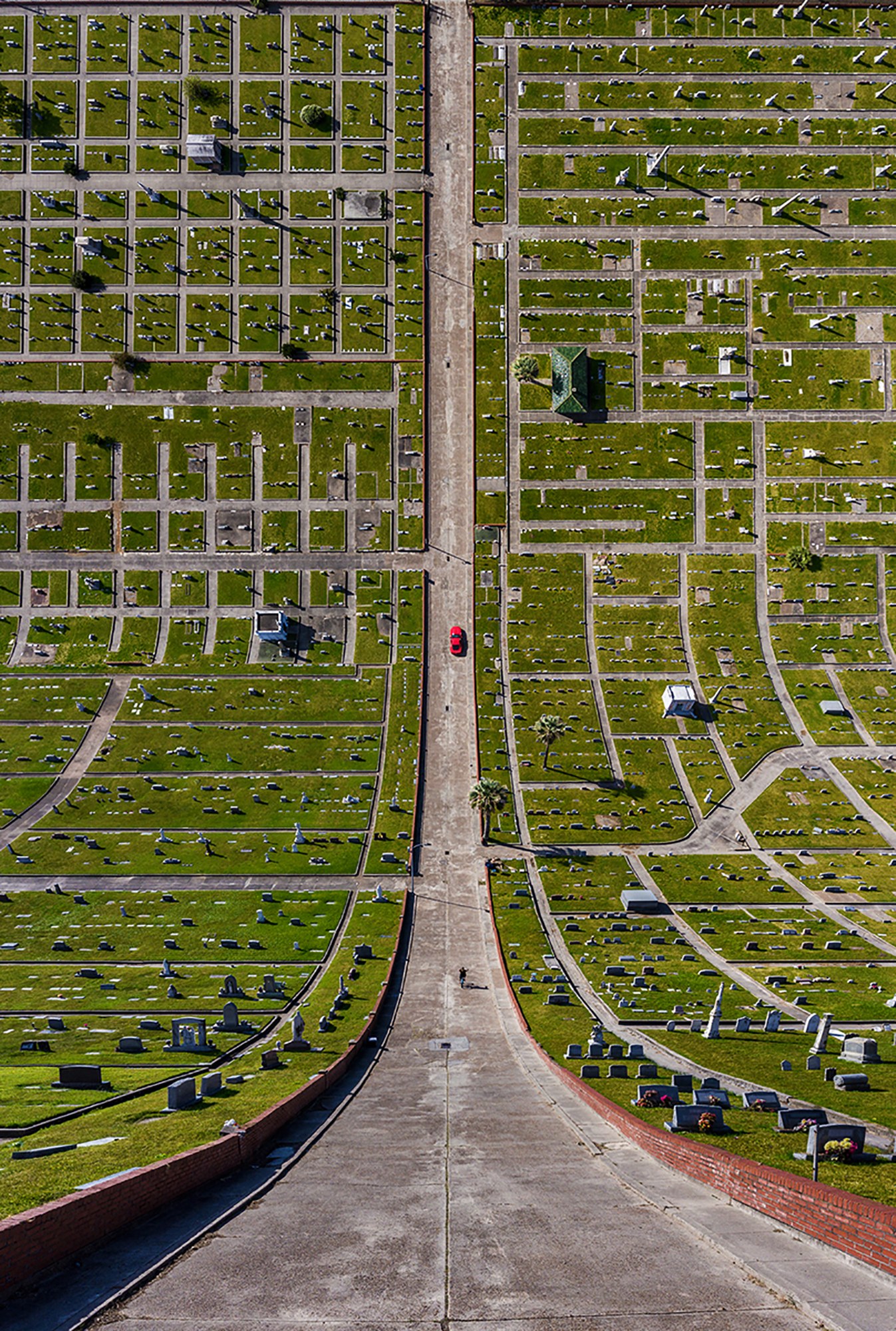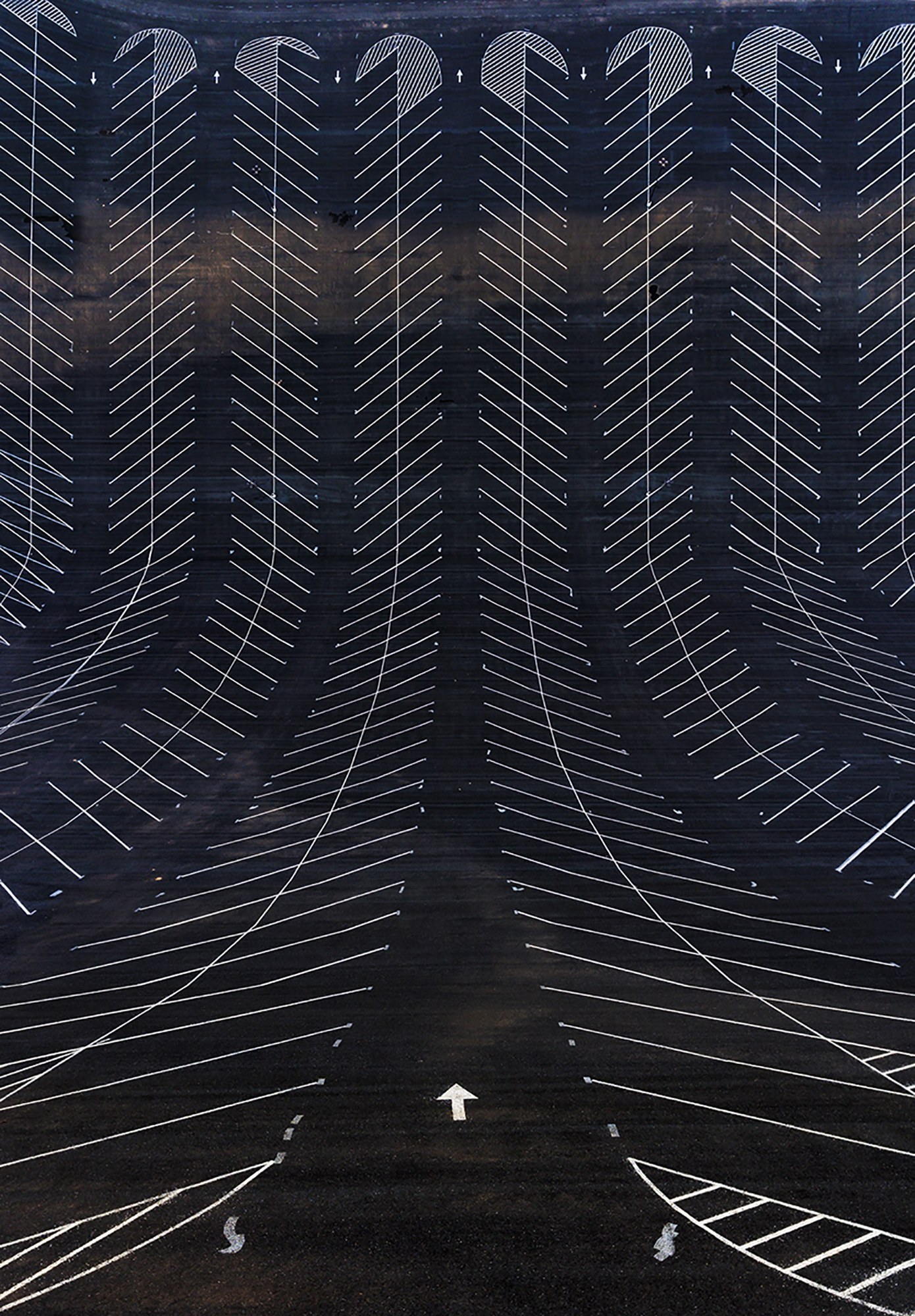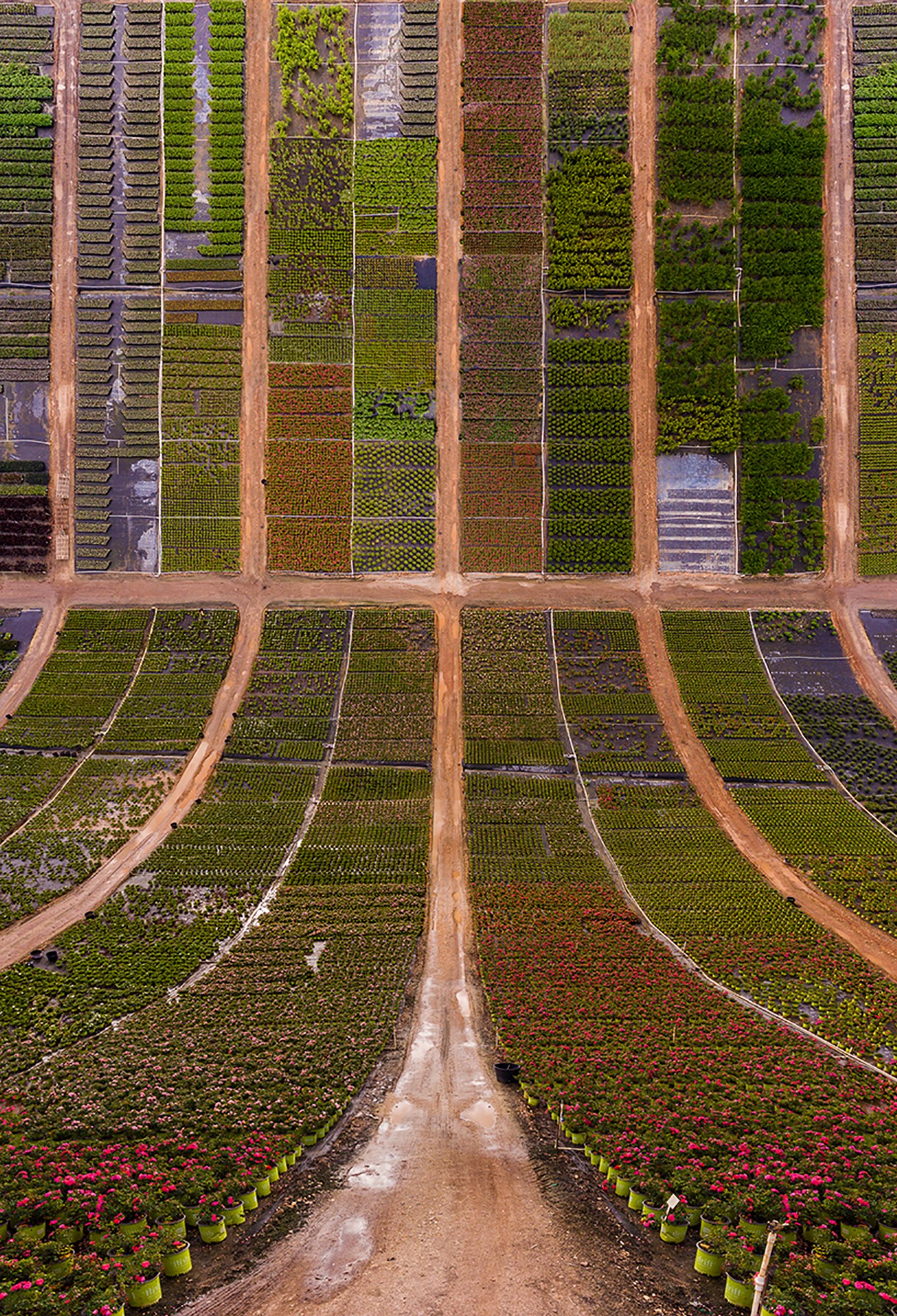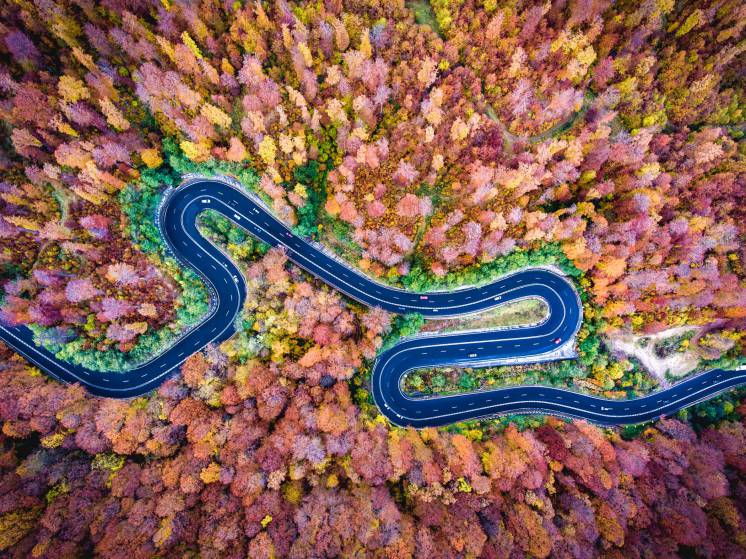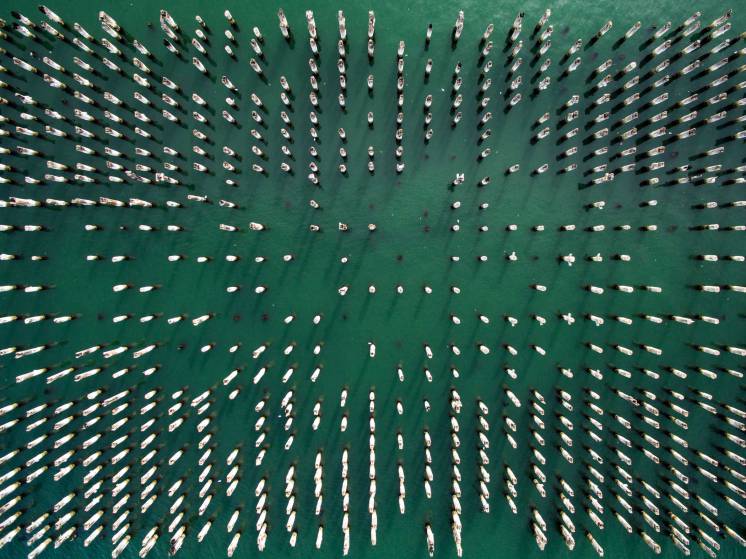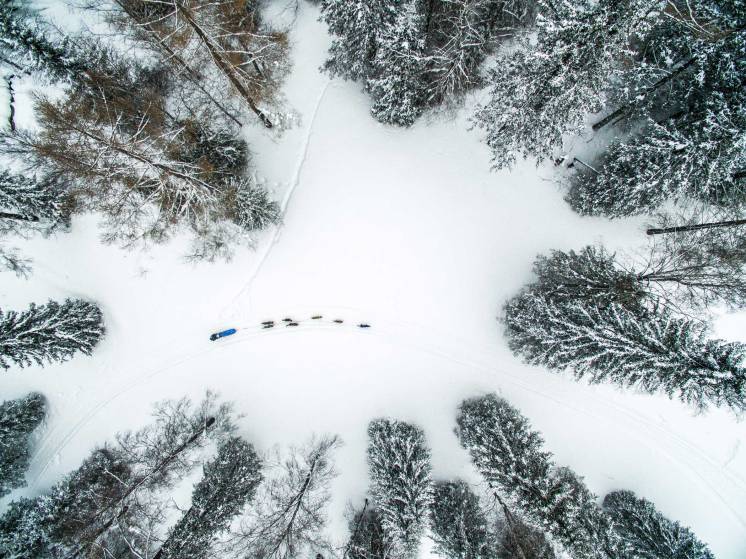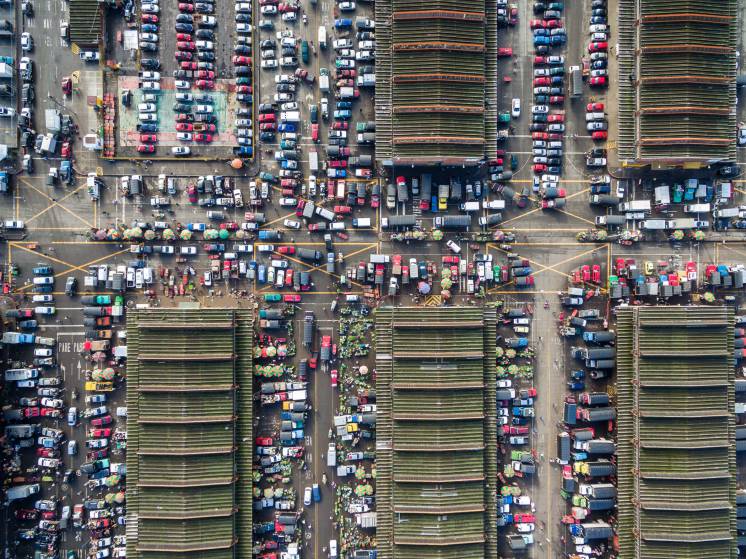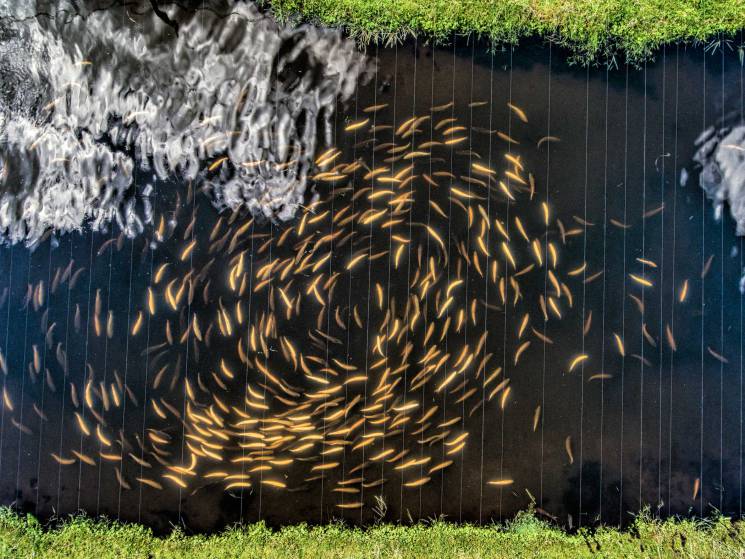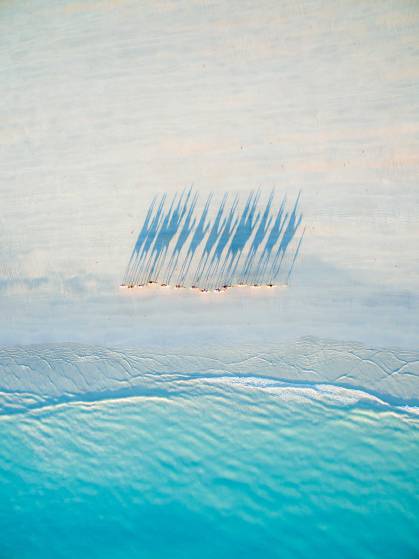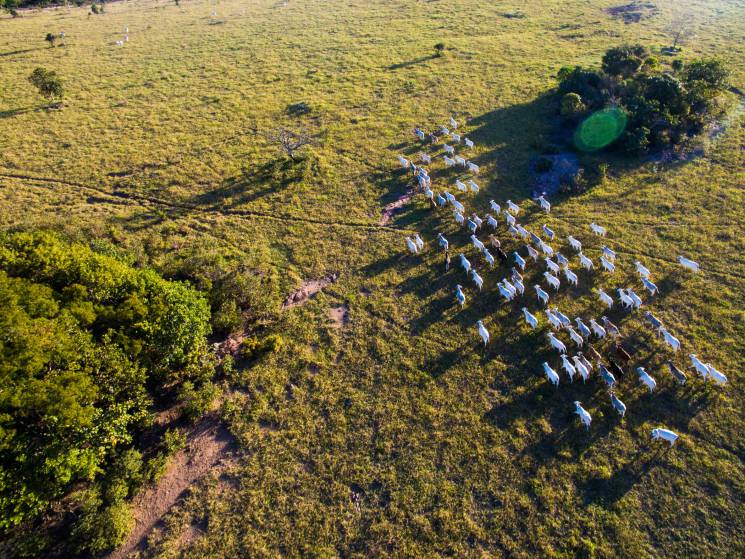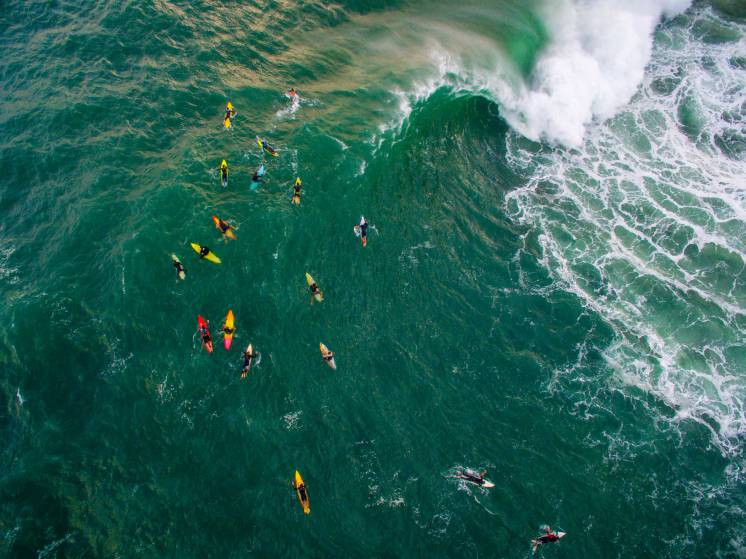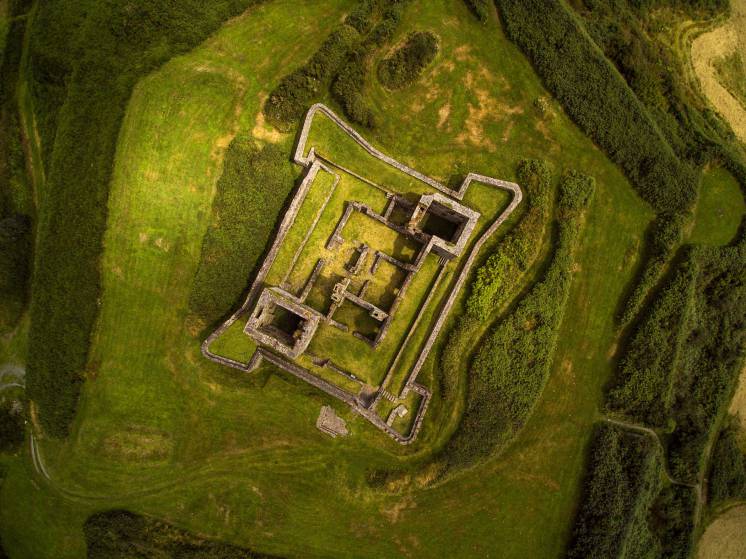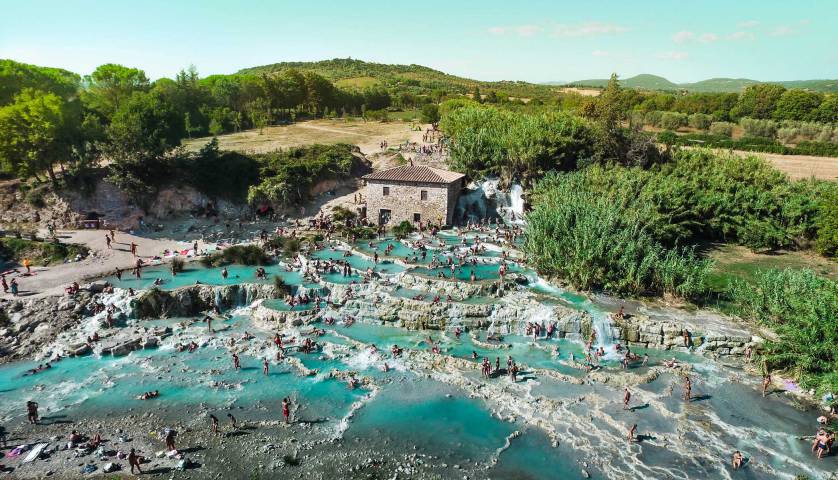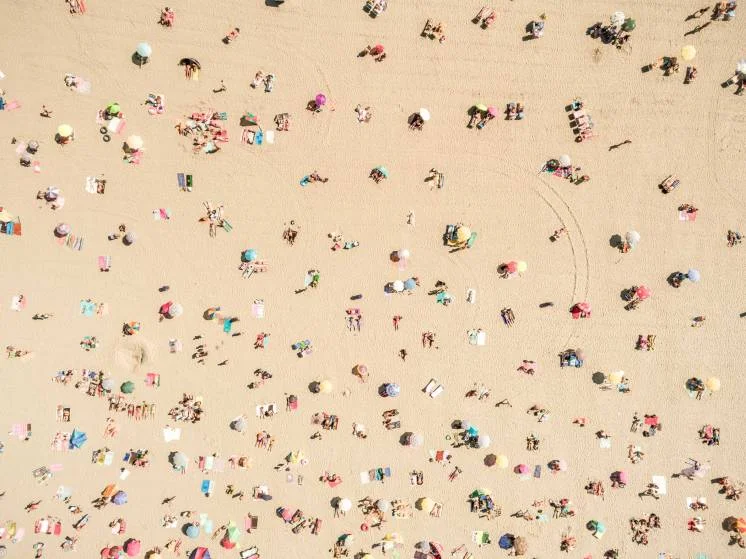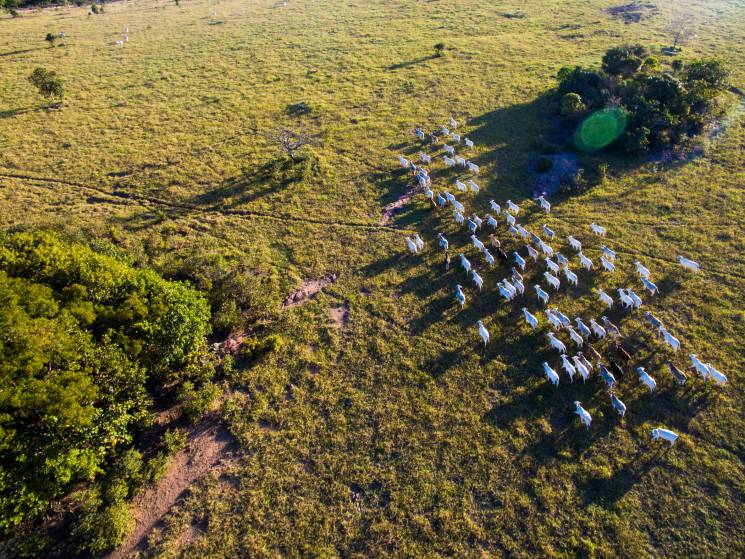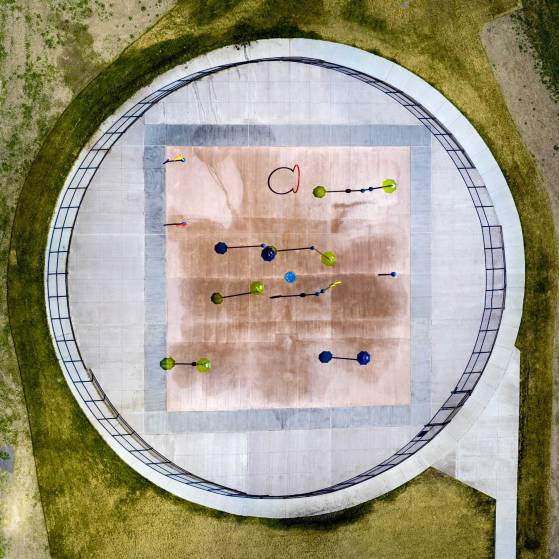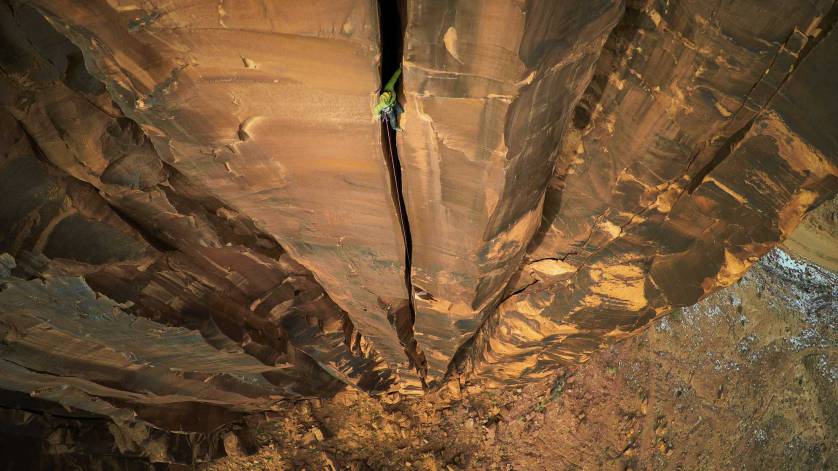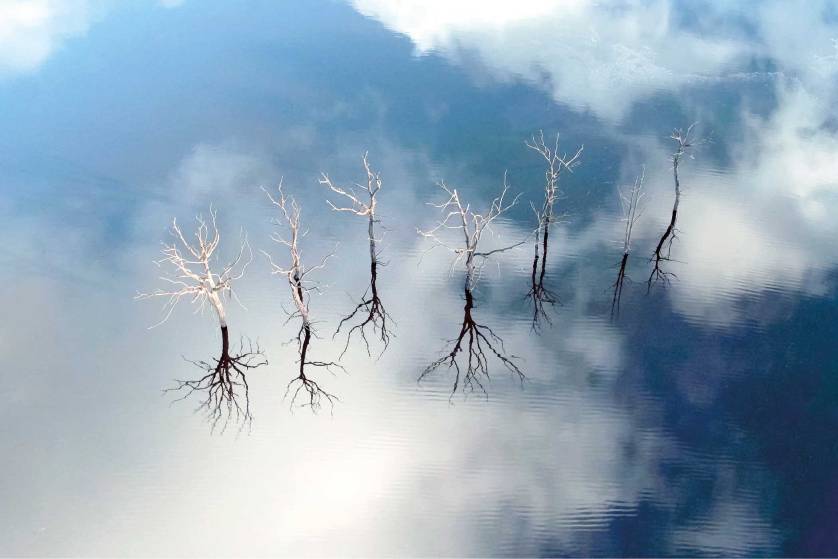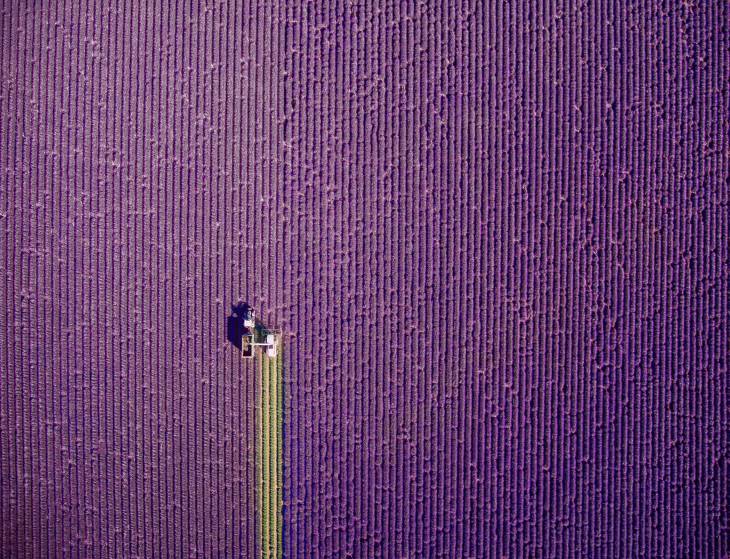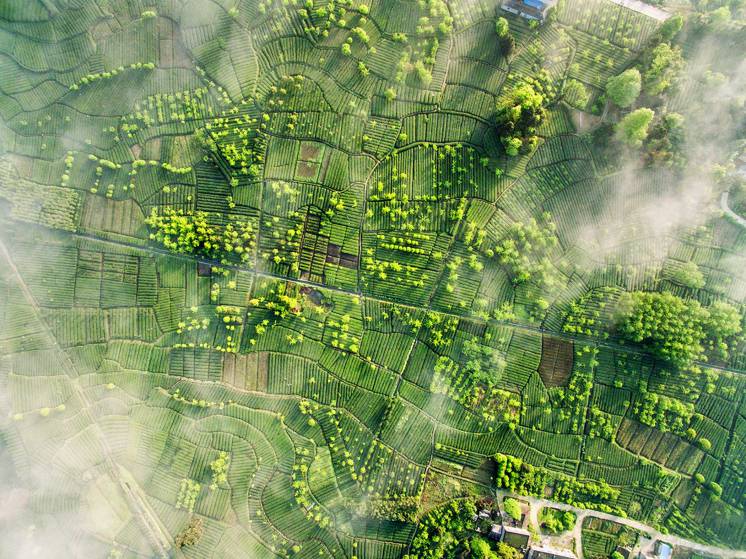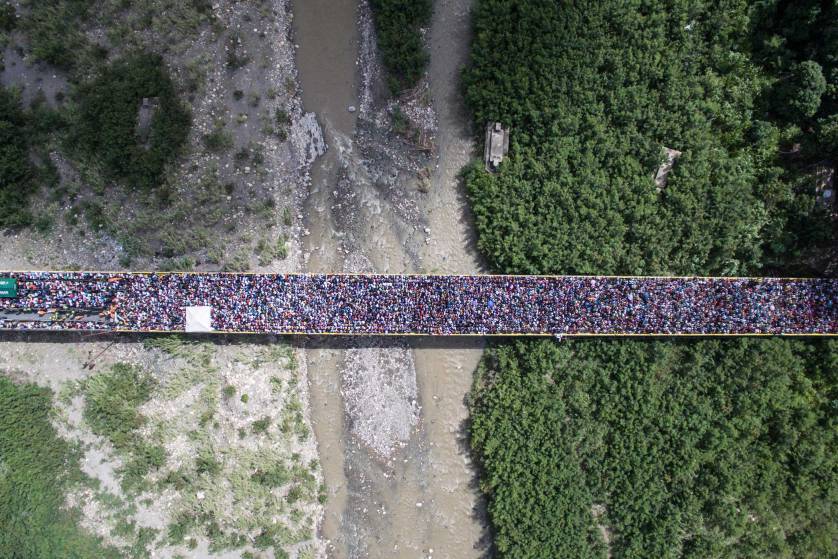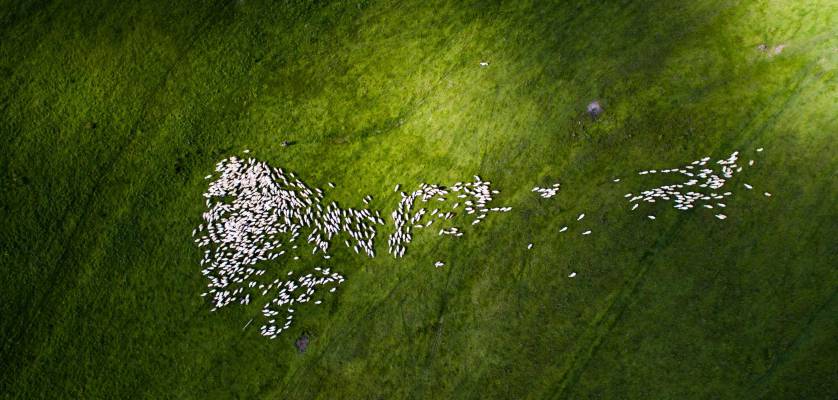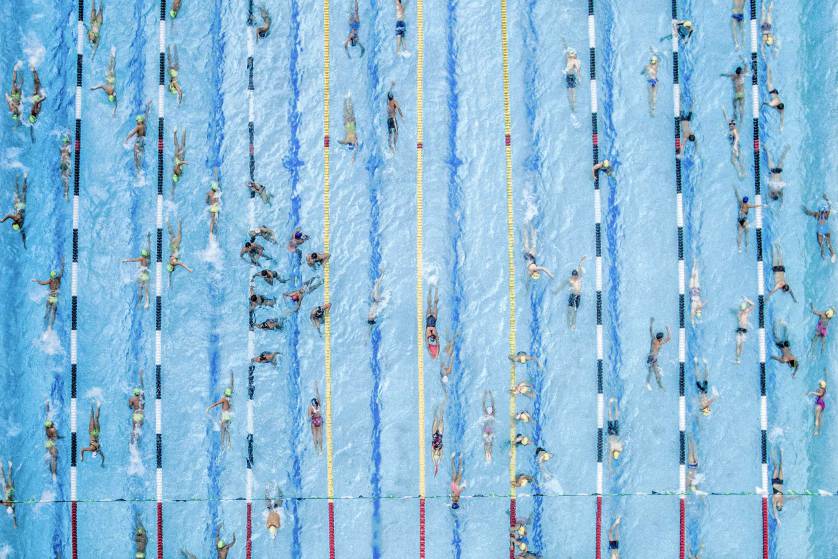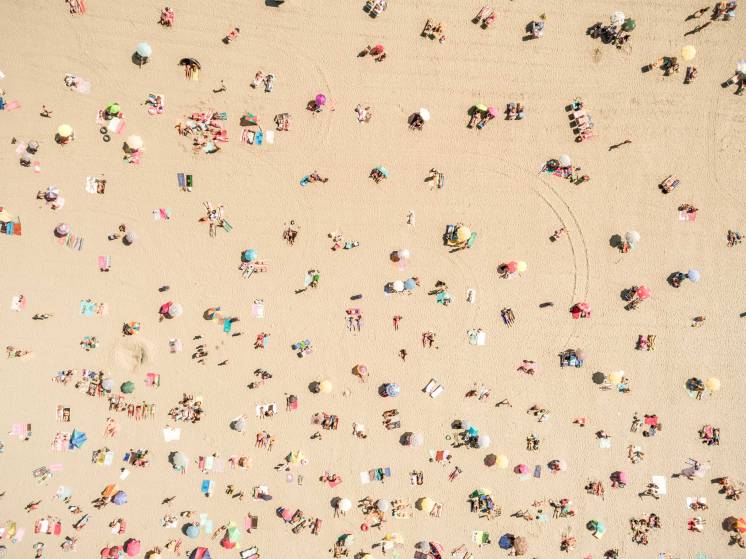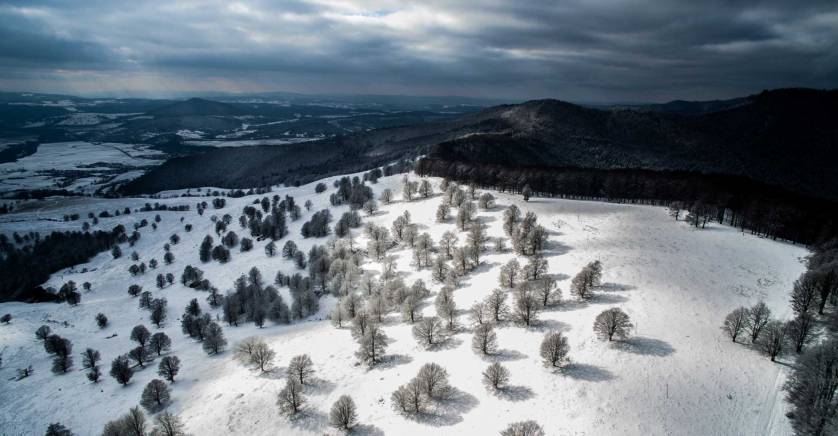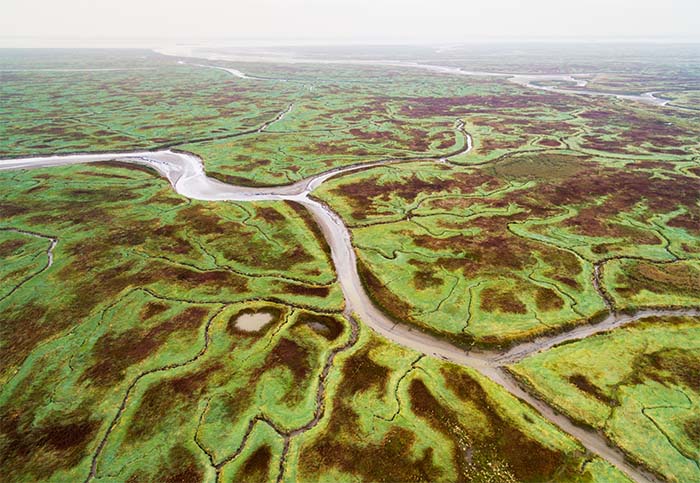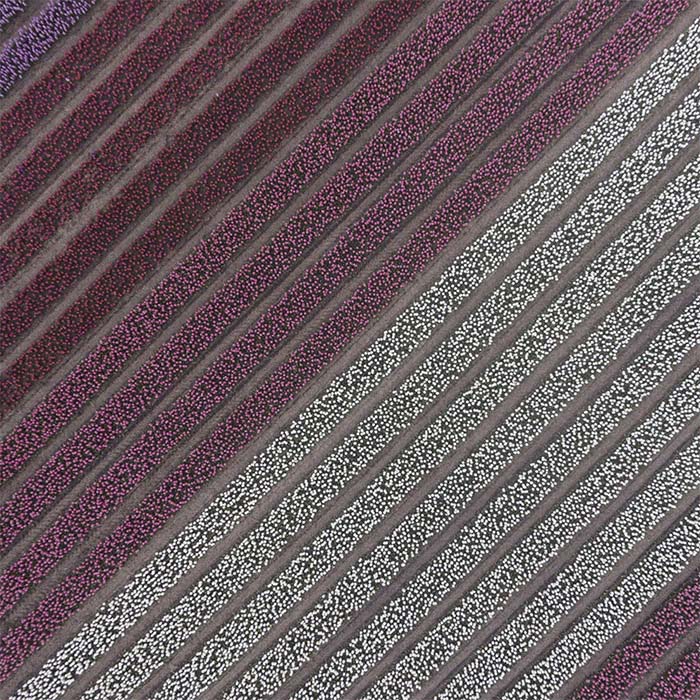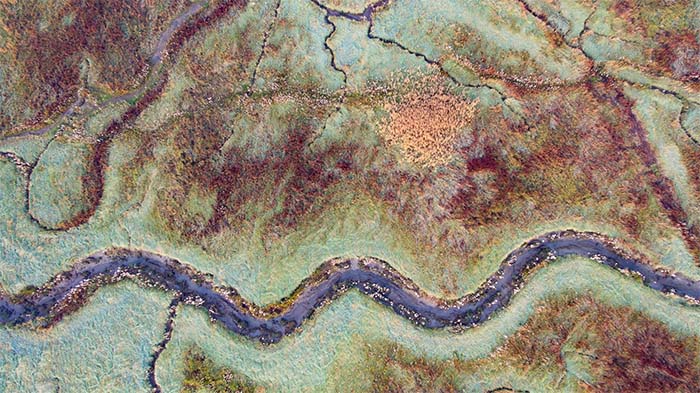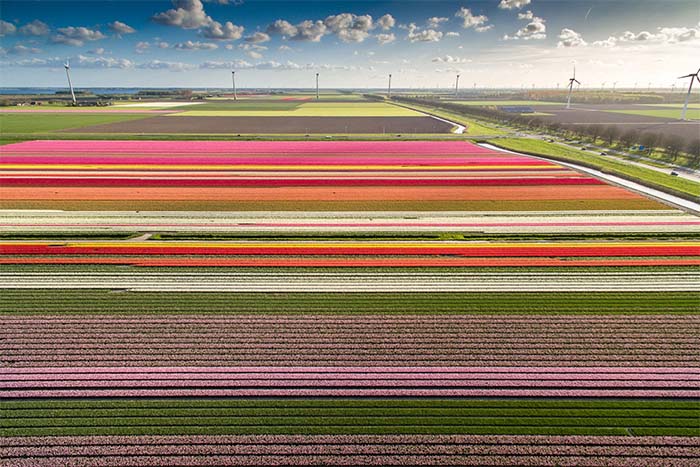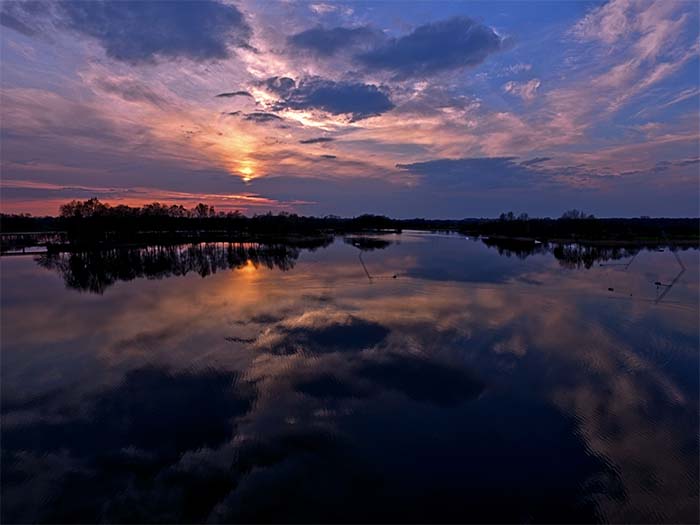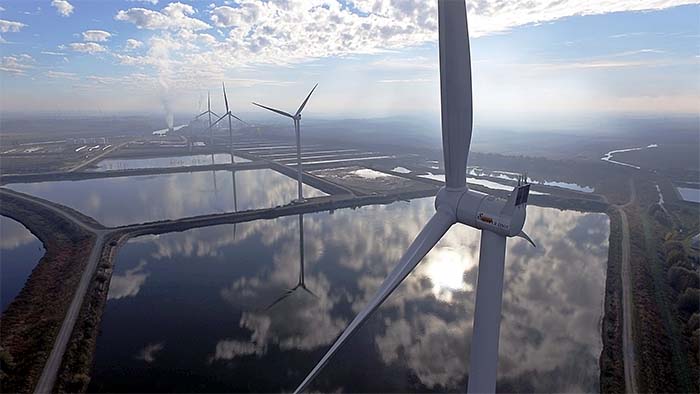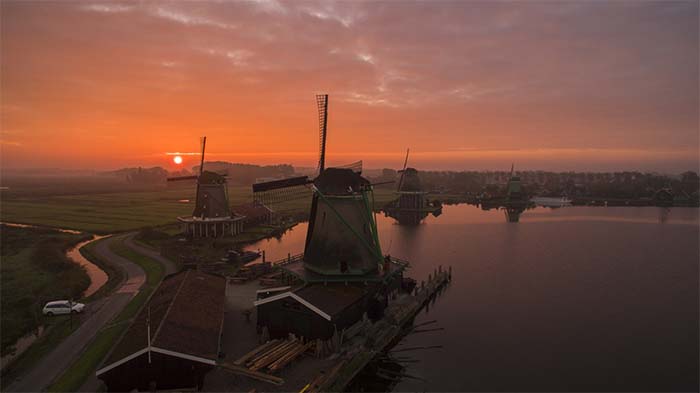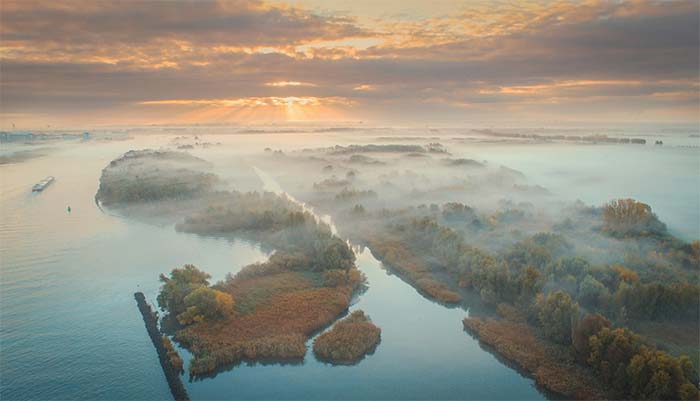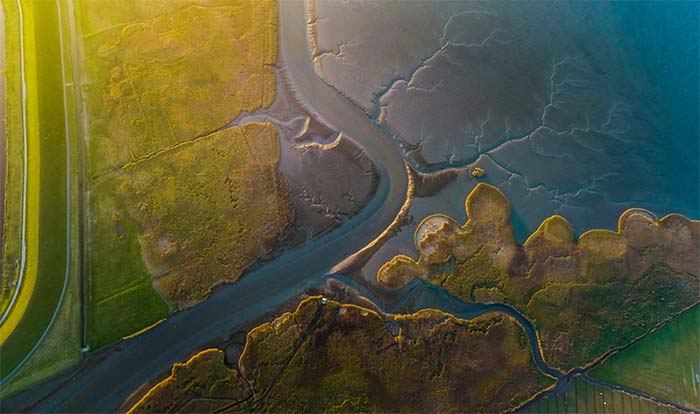5 Drone Film Festivals and How to Enter
If you’re looking to reach a wider audience, gain some recognition from the press, get inspired, or see your work broadcast on the big screen, entering these competitions is your best bet. You may even win some cash and new drone gear. Here are five festivals I recommend looking into and, even if you’re not a filmmaker, attending.
Arguably the largest commercial drone exhibition in the world, the International Drone Conference and Exhibition is hosting its third annual film festival alongside the rest of the event. Submissions have already closed but conference attendees can view finalists on the big screen Wednesday, September 6th from 5:45 – 7:00 pm.
A major international drone film festival is finally arriving in Canada in late September. Put on by The Sky Guys, it takes place in conjunction with the Second Annual Big Drone Show. Submissions are open until September 15th and are not only free, they’ll also grant a 70% discount to the two-day Big Drone Show conference. Simply input your basic information including a link to the video you want to enter and select the film’s category.
Los Angeles Drone Film Festival
The sister festival to New York City Drone Film Festival (NYCDFF), Los Angeles Drone Film Festival makes its debut this October 6th – 8th. The final deadline for submissions has been extended to September 6th as the festival’s notoriously indefatigable organizer, Randy Scott Slavin, has promised “some exciting news.” This is one of the few festivals that boasts a still photography category. If it’s even half as well-organized as NYCDFF (more on that, below), then it’s worth the steep $50 entry fee and ensuing trip to one of the most populous cities on the West Coast.
Flying Robot international Film Festival
Returning for its third consecutive year to San Francisco’s historic Roxie Theatre, the world’s first-ever international drone film festival is accepting entries until September 18th. Organizer Eddie Codel likes to keep participation accessible to everyone, including students, with a low $10 Early Bird Deadline fee. Last year, Flying Robot international Film Festival (FRiFF) received 180 submissions across 8 categories from 40 countries. FRiFF’s jury is made up an eclectic group of top robotics industry professionals including Star Simpson, Veronica Belmont, Rhianna Lakin, Mike Senese, and Zoe Stumbaugh (ZoeFPV).
New York City Drone Film Festival
The fourth installment of the very first festival dedicated solely to aerial cinematography returns March 2nd – 4th, 2018. Submissions opened on August 20th and close January 7th. I was able to attend the third event, this past March, and was amazed at the quality of films, the spacious venue, knowledgeable panelists, and thoroughly informative master classes. Luisa Winters’ course on Color Correction was my favorite. Festival founder Randy Scott Slavin did a stellar job emceeing the event and moderating talks. For it’s size and scale, it’s efficiently executed from beginning to end.
How to Fly a Drone
If your new to drones you may appricate this article by Jen Reviews. It's a pretty comprehinsive guide that should have everything you need to get you started.
Beautiful Drone Video of Scotland
The Locations in the video are:
0:00 - Glencoe (opening scenes of Braveheart shot here) 0:19 - Eilean Donan Castle. 0:34 - Dunnottar Castle 0:52 - Dunnottar Castle 0:59 - Forest near Loch Oich 1:08 - Old Man of Storr (Isle of Skye) 1:18 - Inveraray Castle 1:24 - Finnich Glen - Devil's Pulpit 1:34 - Quiraing (Isle of Skye) 1:40 - Mealt Falls (Isle of Skye) 1:52 - Kilchurn Castle 1:55 - Offshore Northeast of Isle of Skye 2:02 - Neist Point Light House (Isle of Skye) 2:11 - Castle Stalker (Monty Python) 2:23 - Neist Point Light House (Isle of Skye) 2:29 - Quiraing (Isle of Skye) 2:36 - Loch Pooltiel 2:56 - Loch Dunvegan 3:00- Neist Point Light House (Isle of Skye)
Drones in Planet Earth II
BBC’s Planet Earth II is one of most talked about wildlife television productions ever. Wildlife filmmaker and drone operator Michael J. Sanderson of Ateles Films talks to Skytango about his experiences working on the series.
See 7 of the most breathtaking drone videos on Vimeo
Hit play, indulge in the sights, and experience some of the most incredible videos to come out of vimeo.
DRONES GO TO WORK
The disruptive economics of unmanned vehicles are taking hold. Here’s how to think about the drone economy and your place in it.
You might think of drones as toys or flying cameras for the GoPro set, and that is still the lion’s share of the business. But like the smartphone and other examples of the “commercialization of enterprise” before them, drones are now being outfitted with business-grade software and becoming serious data-collection platforms — hardware as open and extensible as a smartphone, with virtually limitless app potential. As in any app economy, surprising and ingenious uses will emerge that we haven’t even thought of yet; and predictable and powerful apps will improve over time.
Great article worth a read at hbr
The New View from Above
Instagrammers around the world are using drone technology to capture breathtaking new perspectives on their cities. The Guardian round up some of the best.
Control a Drone Over LTE
Robotic fliers might soon have always-on internet access.
Internet-connected drones will be necessary if you're going to see fliers that can communicate when they're delivering packages, livestreaming video or otherwise coordinating with the outside world. But how well can you control them over an LTE data connection when they're soaring hundreds of feet above the ground? Quite well, if you ask Qualcomm. The chip maker has published the results of a trial run using LTE-linked drones, and it believes that they're ready for prime time... mostly.
The dry run (which included over 1,000 flights) showed that existing cellular networks are up to the job. Drones will still get a strong LTE signal at altitudes as high as 400 feet, and they get "comparable" coverage. In fact, they have an advantage over the phone in your pocket -- they don't have to hand over connections as often as ground-based devices.
There are improvements Qualcomm would like to make. It wants to see steps to minimize interference (more common at altitude) and signal power tweaks to allow more LTE-enabled drones in the sky at once. Also, it would like software that's better at picking the strongest cell tower signal. It's more a question of when these optimizations happen than "if"," though. Qualcomm is sharing its findings with other companies and the 3GPP wireless standards group, so you might soon see drones that are always online.
See the article at engadget
Flatlands - Surreal Images by Drone
Büyüktaş uses a drone, 3-D rendering, and Photoshop to create a warped view of the world in Flatlands II. He pulled the same trick two years ago, turning his hometown of Istanbul into a mind-bending world that brought to mind the work of M.C. Escher. This time, he focused on the American Southwest. “The area is like heaven for a photographer,” he says.
Why a Farmer Should Hire a Drone
What in the world would a farmer do with a drone?
Quite a bit actually, the limit is 400' and your imagination.
- Check crops, irrigations, ditches, grain bins, & animals
- Record drainage tile, problem areas, and mark wet spots
- Train new recruits with a new perspective to show them the ropes
- The list goes on and on but the most important thing is that if you are a farmer, you need to hire a drone!
Watch a Film Shot Entirely on a Drone
DJI released “The Circle,” a 14-minute short film starring Ryan Phillippe and Noah Schnapp (Will Byers from Stranger Things) as an estranged father and son (respectively) in Depression-era America.
The Circle was shot entirely on the Inspire 2, using the drone’s X5R camera for every shot in the film. It was created by Academy Award-winning cinematographer Claudio Miranda, known for his work on “Life of Pi,” “Oblivion,” and “Tron.”
See the behind the Scenes
Flying a Drone in a National Park
The National Park Service in August 2014 made it illegal to launch, land, or operate unmanned aircraft under 36 CFR 1.5, which essentially gives the National Park Service the authority to impose public use limits such as hours of operations or not walking off the path.
However, there is a chance you can still fly your drone there. Purposes such as scientific study, search and rescue operations, fire operations, and law enforcement can operate under written permission from National Park Service administration.
No matter what National Park you want to fly in, contact that park’s specific management team well in advance and explain what you need to do. It would help if you can prove your case and professionalism. Ideally you would have a Part 107 certification from the Federal Aviation Administration to prove you are a licensed drone pilot. If you don’t, get it first!
Seven Ways to Use Drone Mapping on the Farm This Season
As one ag industry expert put it, using a drone on the farm is like being able to see your field from a 10,000-foot altitude, but also being able to zoom in to two inches above the plants. Growers are increasingly discovering that drone mapping is an invaluable tool, both for its ease of use, and for its many applications on the farm.
1. Crop Scout to Detect Parasites and Fungi
Using drone mapping to pinpoint plant health issues such as parasites and fungi.
2. Compile Plant Counts
One of the most exciting uses for drone mapping in agriculture is the ability to conduct complete, accurate plant counts.
3. Analyze Stand Establishment
In addition to plant counts, corn and soybean growers are using drone mapping to analyze stand establishment of newly planted crops to decide whether they need to replant certain areas.
4. Generate Variable Rate Prescriptions for Nitrogen and Pesticides
Drone maps provide a rich amount of data that can be used to make more informed decisions about issues like crop reseeding and targeted nutrient applications.
5. Assess and Clean-up Damage After a Storm
Generate a detailed Skymatics crop damage report
6. Negotiate Fair Crop Loss Percentages
Detailed information provided by drone map, gives an adjustor a second look at targeted areas and ultimately offere a far higher loss percentage.
7. Assess Slope and Drainage After the Harvest
Drone-generated elevation map can give a sense of the slope and drainage of a field. Paired with volume measurement tools, growers can plan the cut and fill of future terraces and waterways.
Drone Captures Volcano Eruption In Iceland
It’s an interesting time for photographers, with previously unavailable technologies allowing them to capture breathtaking never-before-seen imagery. The footage below captured by drone manufacturer DJI is one such example.
Too dangerous for a manned aircraft, a drone was the safest bet when a DJI team decided to capture footage of the erupting Bárðarbunga volcano in Iceland. Geophysicist for the National Icelandic Civil Protection, Bjorn Oddsson, told ABC News, “The volume of the lava is the largest we’ve seen in Iceland for 230 years.”
And check this out: the camera flew so low into the fissure that the GoPro camera attached to the drone literally melted — its lens turned into a jelly blob on the front of the camera body (though luckily, the SD card was salvaged). Because of DJI built-in technology, the device was able to detect trouble and fly itself back to a landing point, saving this magnificent footage from being lost in the belly of the volcano.
One man's mission to walk the Great Wall of China with a drone
William Lindesay has been obsessed with the Great Wall of China since seeing it in a school atlas as a child in England, and last year embarked on an epic journey to fulfil a lifelong ambition - to film the wall in its entirety from the air. He told the BBC's Anna Jones about this quest. Read More
The Farming of the Future: Agriculture Drones Take to the Skies
IN BRIEF
Agriculture already leads the market for commercial drone usage, and it is expected to generate $350 million in drone revenue in 2025.
New regulations will make it easier for American farmers to use drones to check fields for disease, spray fertilizer, or watch over livestock.
The Best Drone Photographs of 2016
Photography aims to show what has not been seen. Drone photography achieves that, providing a new perspective on the world from points we cannot easily reach.



